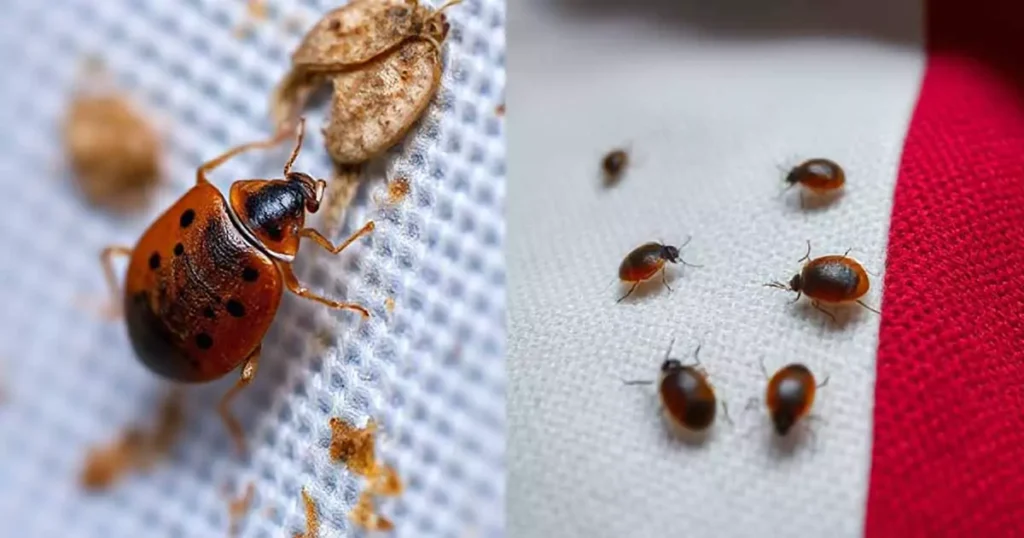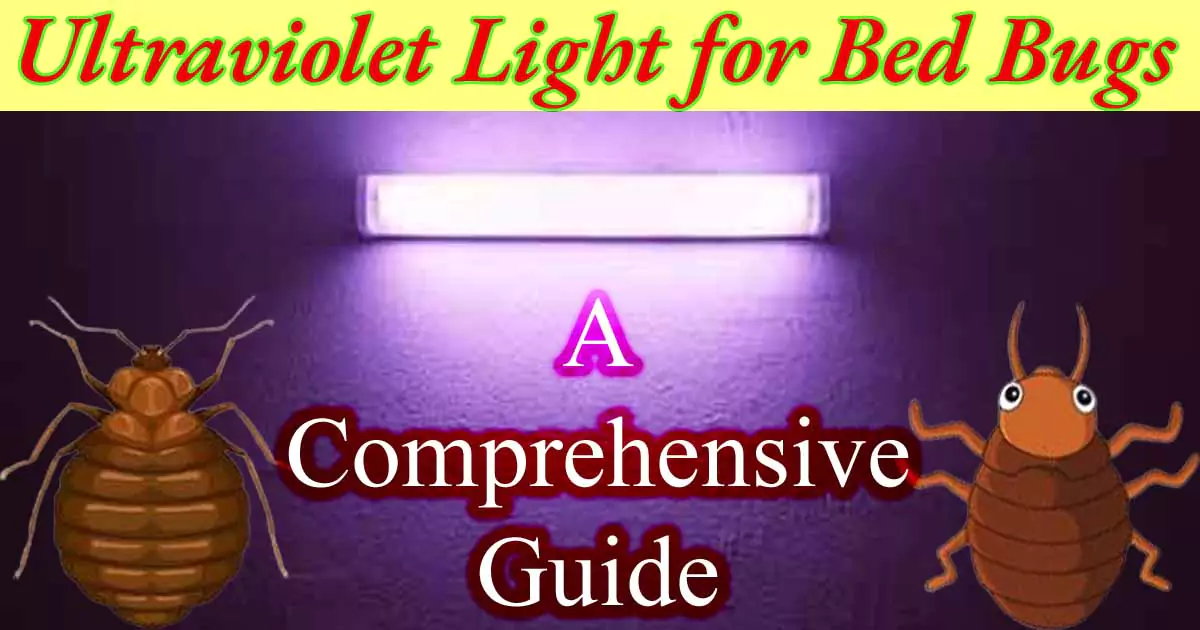Bed bugs are among the most persistent pests that invade homes, hotels and other living spaces. These tiny, blood-sucking insects are difficult to get rid of, and their ability to hide in cracks makes it very difficult for conventional control methods to work.
In recent years, however, ultraviolet light (UV light) has been shown to be a possible means of detecting and controlling the tiny bugs. How valid is this and what should you know before making a decision on this issue? This article looks at whether UV light is effective against bed bugs and gives some tips on what information you should have before using it.
Understanding Bed Bugs
Before we look at UV light as a solution, it’s important to understand what bed bugs are and why it’s so difficult to get rid of them. Bed bugs are small, oval-shaped insects that feed on the blood of humans and animals. They are nocturnal, coming out at night to feed and then hiding in their dark resting places during the day.
Why are Bed Bugs Hard to Get Rid Of?
Small Size and Flat Bodies: Bed bugs grow to about 4-5 mm long and have a flattened body that allows them to squeeze into tight spaces.
Rapid Breeding: A female bed bug can lay hundreds of eggs during her lifetime, each of which produces a rapid succession of generations.
Resistance to Pesticide: Many bed bug populations have adapted to common chemical treatments, making them ineffective.
Expert Hiders: They hide in mattresses, furniture and electrical outlets. In fact, anywhere hidden lights are needed. Sometimes I think if it was not so awful, it would be ridiculous.
What Is Ultraviolet Light?
Ultraviolet (UV) light is a type of electromagnetic radiation with a wavelength shorter than visible light, but longer than X-rays. It is divided into three ranges:
UV-A (320-400 nm): Long wavelength UV light that is often used in black light lamps.
UV-B (280-320 nm): Medium-wave UV light associated with sunburn.
UV-C (100-280 nm): Short-wave UV light used for sterilization and germicidal purposes.
Relationship between Ultraviolet (UV) Light and Bedbugs
UV-C light in particular is known for its ability to destroy the DNA of microorganisms, making it a popular choice for disinfection. But can it work on bedbugs?
UV Light Is Useful for Disinfection, as Well as Being Harmful
The ability to view an insect under UV light and see the entire bug fluoresce white is an effect that shows how UV makes insects vulnerable. UV not only kills by burning, but becomes a kind of poison. However, there are still questions about whether or not UV light can kill bed bugs themselves.

How UV Light Affects Bed Bugs?
UV light can affect bedbugs in two primary ways.
- Detection: UV-A light can cause the exoskeleton of bedbugs to fluoresce under black light, which is useful for finding the bugs in dark or hard-to-reach places.
- Killing: UV-C light potentially damages both the DNA and cell structures of bedbugs, so it could be used against them, but this would require direct exposure to UVC rays, which should be lengthy enough. Realistically, such a procedure is difficult to carry out against bed bugs, as they prefer to take cover rather than stay put. However, this requires direct exposure to UV-C rays for a sufficiently long period of time, which is difficult given the tendency of bed bugs to hide.
UV Light vs. Conventional Methods
Traditional methods of bed bug control include the use of chemical insecticides, heat treatment, and physical removal. While UV light can enhance these methods by combining with their various strengths, it is not a stand-alone solution due to its low penetration into deep hiding places.
Benefits of Using UV Light for Bed Bugs
- Free of Chemicals: UV light is an option without toxic chemicals. This makes it an ideal measure suited to households with children or pets and for people who cannot tolerate chemical treatments.
- Immediate Results for Detection: The UV-A light ensures that you can quickly detect bed bugs and helps you to better recognize what you should focus on when eliminating them.
- Handy and Easy to Use: Many UV light devices are compact and easy to use and are suitable for both homeowners and professionals.
- Potential for Sterilizing Environments: UV-C light also kills bacteria, viruses and fungi and therefore offers further health benefits.
Limitations of UV Light for Bed Bugs
- Limited Penetration: Ultraviolet rays need straight exposure in order to work effectively. Bed bugs like to hide, and it is difficult for UV light to penetrate narrow spaces.
- Time-Consuming: It is a time-consuming process to expose the hiding places of bed bugs to UV-C light for a sufficient time.
- The Risk of Skin and Eye Damage: UV-C light can damage human skin and eyes over time, so appropriate precautions are necessary
- Incomplete Solution: UV light is best used as part of an integrated pest management (IPM) strategy as opposed to a single control method.
What are the practical applications of UV light?
1. Finding Bed Bugs
Bed bugs show a characteristic fluorescence under UV light. You can use a UV-A black light to inspect mattresses, furniture and places where they might be hiding in other parts of the house. Look for their exoskeletons or fecal spots that appear when a UV lamp is directed at them.
2. Killing Bed Bugs
UV-C devices can be used to kill bed bugs. These steps should be followed:
- Detect infested areas: use a UV-A light or other detection method.
- Treat the infested areas with UV-C rays, taking care to irradiate the bed bugs directly and at close range.
- This process is repeated until all the eggs and bugs have been exposed to the UV-C rays.
3. Shake off the infestation
If luggage, clothing, and carpets have come into contact with bed bugs for any reason, UV-C sterilization can be used as a prophylactic measure. It is better to turn off the lamp for a second and then remove the bed bug dust from the interior. Bedding, clothing, curtains and other household fabrics suspected of harboring bed bugs can be treated in a UV cabinet with sheets for viruses. These should first be inspected very carefully to ensure that no live bed bugs are present. If bed bugs are found or suspected, the procedure described above should also be applied to these items.
Tips for Using UV Light Safely
- Wear Protective Gear: Use UV-blocking goggles and gloves when working with UV-C devices.
- Avoid Prolonged Exposure: Limit exposure time to prevent skin and eye damage.
- Follow Manufacturer Instructions: Always adhere to the guidelines provided with your UV device.
- Combine with Other Methods: For maximum effectiveness, use UV light alongside chemical treatments, heat, and regular cleaning.
Conclusion
Ultraviolet light is a promising tool for detecting and controlling bed bug infestations. Although it is not a magic bullet, there are other methods besides UV that you can consider to make your pest control more effective. The absence of chemicals and the ability to sterilize surfaces make UV light particularly popular with those looking for an environmentally friendly solution.
In addition, installing small UVC lamps in airplanes can improve air quality without chemicals and reduce maintenance costs at the same time! However, UV light has its limitations. By understanding how ultraviolet light works and incorporating it into a more comprehensive pest control strategy, you can take a big step towards ridding your home of these pests.

